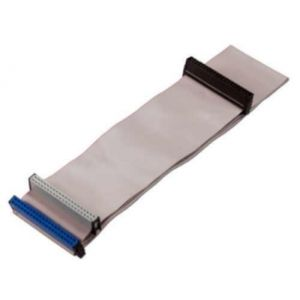Difference between revisions of "Arcane mixing techniques"
From Gender and Tech Resources
m (→NMOS and PMOS Logic) |
m (→NMOS and PMOS Logic) |
||
| Line 155: | Line 155: | ||
==== NMOS and PMOS Logic ==== | ==== NMOS and PMOS Logic ==== | ||
| − | PMOS and NMOS ('''p'''- and '''n'''-channel '''m'''etal '''o'''xide '''s'''emiconductors offer the advantage of higher component density than TTL chips. They too are sensitive to damage from electrical discharge. | + | PMOS and NMOS ('''p'''- and '''n'''-channel '''m'''etal '''o'''xide '''s'''emiconductors) offer the advantage of higher component density than TTL chips. They too are sensitive to damage from electrical discharge. |
== Related == | == Related == | ||
Revision as of 11:56, 31 August 2015
Contents
Digital techniques basics
For conceptual basics from the atomic level up see Semiconductors, Diodes and Transistors https://www.youtube.com/watch?v=wPHG0DCWcC0 AND An Introduction to Logic Gates https://www.youtube.com/watch?t=10&v=95kv5BF2Z9E.
Gates
AND
The AND gate behaves in the same way as the logical and operator: Output is true when both inputs are true and any otherwise false:
| Input 1 | Input 2 | Output |
|---|---|---|
| 0 | 0 | 0 |
| 0 | 1 | 0 |
| 1 | 0 | 0 |
| 1 | 1 | 1 |
OR
The OR gate behaves like a logical inclusive or: Output is true if either or both of the inputs are true and false if both inputs are false:
| Input 1 | Input 2 | Output |
|---|---|---|
| 0 | 0 | 0 |
| 0 | 1 | 1 |
| 1 | 0 | 1 |
| 1 | 1 | 1 |
XOR
The XOR (exclusive-OR) gate acts as a logical either/or: the output is true if the inputs are different, and false if the inputs are the same:
| Input 1 | Input 2 | Output |
|---|---|---|
| 0 | 0 | 0 |
| 0 | 1 | 1 |
| 1 | 0 | 1 |
| 1 | 1 | 0 |
NOT
A logical inverter, alias NOT gate, has only one input and reverses logic state:
| Input 1 | Output |
|---|---|
| 0 | 1 |
| 1 | 0 |
NAND
A NAND gate works like an AND gate followed by a NOT gate:
| Input 1 | Input 2 | Output |
|---|---|---|
| 0 | 0 | 1 |
| 0 | 1 | 1 |
| 1 | 0 | 1 |
| 1 | 1 | 0 |
NOR
The NOR gate is a combination OR gate followed by an inverter:
| Input 1 | Input 2 | Output |
|---|---|---|
| 0 | 0 | 1 |
| 0 | 1 | 0 |
| 1 | 0 | 0 |
| 1 | 1 | 0 |
XNOR
XNOR (exclusive-NOR) gate is a combination of an XOR gate followed by an inverter:
| Input 1 | Input 2 | Output |
|---|---|---|
| 0 | 0 | 1 |
| 0 | 1 | 0 |
| 1 | 0 | 0 |
| 1 | 1 | 1 |
Universal gates
The NAND and the NOR gate can be considered to be "universal" because you can make any of the basic operations out of its combinations: an inverter, an OR gate or an AND gate. Non-inverting gates do not have this versatility since they can not make an invert.
Boolean algebra applied
Examples on the board
Serpent
Resources
Breadboards
You can buy solderless breadboards in a shop or online. Mind that you pick scalable like the SD-12 so you can hook up breadboards together and they become reuseful for other projects such as prototyping our own greenhouse sprinkler management systems.
Alternatively (and the path I will take), start gathering and collecting IDC ribbon connectors (Floppy drive cables, old HD cables, SCSI cables) to build your own breadboards with. To do this, you will also need a solder iron, hot glue, wire (for example telephone wire will do), a small screw driver, and a clamp. This board will also be scalable. Fine grained scalable. :D
Chips
TTL Logic
TTL (transistor-transistor-logic) chips were developed with use of transistor switches for logical operations and defines the binary values as:
- 0 V to 0.8 V = logic 0
- 2 V to 5 V = logic 1
They are inexpensive, but draw a lot of power and must be supplied with +5 volts. Individual gates may draw 3 to 4 mA. The low power Schottky versions of TTL chips draw only 20% of the power, but are more expensive. These chips have LS in the middle of their model number.
CMOS Logic
CMOS (complementary metal oxide semiconductor) chips are lower in power requirements (drawing about 1 mA) and operate with a wide range of supply voltages (typically 3 to 18 volts). The CMOS model number will have a C in the middle of it. A bigh drawback is extreme sensitivity to static electricity - they must be carefully protected from static discharges.
NMOS and PMOS Logic
PMOS and NMOS (p- and n-channel metal oxide semiconductors) offer the advantage of higher component density than TTL chips. They too are sensitive to damage from electrical discharge.







